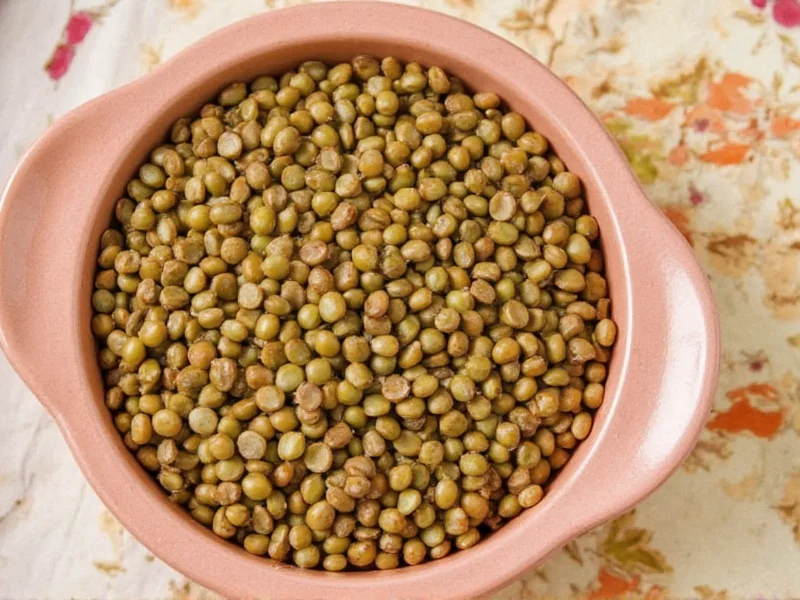When evaluating plant-based protein sources, lentils consistently rank among the top choices for health-conscious eaters and those following vegetarian or vegan diets. These humble legumes pack a powerful nutritional punch that extends far beyond their protein content alone.
Understanding Lentil Protein Content
Lentils contain approximately 9 grams of protein per 100 grams when cooked, making them significantly higher in protein than most other plant foods. A standard serving size of cooked lentils (about 1 cup or 198g) delivers 17.9 grams of protein, which represents roughly 36% of the daily protein requirement for an average adult consuming 2,000 calories per day.
The protein content varies slightly among different lentil varieties:
| Lentil Type | Protein per Cooked Cup (198g) | Protein per 100g |
|---|---|---|
| Brown/Green Lentils | 18g | 9.0g |
| Red/Yellow Lentils | 17g | 8.5g |
| Black (Beluga) Lentils | 19g | 9.6g |
| Puy Lentils | 18g | 9.1g |
The Quality of Lentil Protein
While lentils are high in protein, they're considered an incomplete protein source because they lack sufficient amounts of the essential amino acid methionine. However, this doesn't diminish their value in a balanced diet. By combining lentils with grains like rice, wheat, or quinoa, you create a complete protein profile that contains all nine essential amino acids.
This protein complementation is straightforward to implement in daily meals. Traditional dishes like Indian dal with rice, Middle Eastern mujadara (lentils with bulgur), or classic lentil soup with whole grain bread naturally provide complete protein through food pairing.
Nutritional Benefits Beyond Protein
Lentils offer a remarkable nutritional package that extends well beyond their protein content. A single cup of cooked lentils provides:
- Nearly 65% of your daily fiber needs, supporting digestive health
- 37% of the recommended daily iron intake, crucial for oxygen transport
- 49% of your daily folate requirement, essential for cell function
- Significant amounts of potassium, magnesium, and B vitamins
- Only 230 calories with virtually no fat
The combination of protein and fiber in lentils creates a powerful satiety effect, helping with weight management by keeping you feeling full longer than many other carbohydrate sources.
Comparing Lentil Protein to Other Sources
How does lentil protein stack up against other common protein sources? While animal proteins generally contain more protein per serving, lentils offer a compelling plant-based alternative with additional nutritional benefits.
Consider these comparisons for a standard serving:
- 3 ounces of chicken breast: 26g protein (but also contains 3g fat)
- 3 ounces of salmon: 22g protein (with healthy omega-3 fats)
- 1 cup cooked lentils: 18g protein (with 15g fiber and no fat)
- 1 cup cooked quinoa: 8g protein
- 1 cup black beans: 15g protein
What makes lentils particularly valuable is their protein-to-calorie ratio. At just 230 calories per cup, lentils deliver exceptional protein density without the saturated fats found in many animal proteins.
Practical Ways to Incorporate Lentils
Adding more lentils to your diet is simpler than you might think. Here are practical strategies for maximizing their protein benefits:
- Replace half the ground meat in tacos or spaghetti sauce with cooked lentils
- Add cooked lentils to soups and stews for extra protein and texture
- Create protein-packed lentil salads with vegetables and vinaigrette
- Make lentil-based veggie burgers or meatless loaves
- Blend cooked lentils into smoothies for added protein (works best with red lentils)
For optimal protein absorption, pair lentils with vitamin C-rich foods like tomatoes, bell peppers, or citrus. This combination enhances iron absorption from the lentils, maximizing their nutritional benefits.
Who Benefits Most from Lentil Protein?
Lentils serve as an exceptional protein source for several dietary approaches:
- Vegans and vegetarians: As a cornerstone protein source in plant-based diets
- Budget-conscious eaters: Dried lentils cost as little as $0.10-$0.15 per serving
- Heart health focused individuals: Zero cholesterol and high in heart-healthy fiber
- People with diabetes: Low glycemic index helps regulate blood sugar
- Athletes and active individuals: Provides sustained energy and muscle recovery support
Unlike some plant proteins that require special preparation or processing, lentils deliver their protein benefits in their natural, whole-food form without any refinement.
Maximizing Lentil Nutrition
To get the most protein and nutritional value from lentils:
- Avoid overcooking, which can degrade some nutrients
- Soak lentils for several hours before cooking to reduce cooking time and improve digestibility
- Combine with grains within the same meal for complete protein
- Add acidic components like lemon juice or tomatoes to enhance mineral absorption
- Store dried lentils in airtight containers away from light and moisture
Proper preparation not only maximizes the protein benefits of lentils but also improves their digestibility, reducing the potential for gas or bloating that some people experience with legumes.
Addressing Common Misconceptions
Several myths persist about lentil protein that deserve clarification:
- Myth: Plant proteins are inferior to animal proteins
Reality: While individual plant proteins may lack certain amino acids, a varied plant-based diet easily provides complete protein - Myth: You need to combine proteins at every meal
Reality: Your body maintains amino acid pools, so complementary proteins can be consumed throughout the day - Myth: Lentils don't provide enough protein for athletes
Reality: With proper planning, plant-based athletes can meet and exceed protein requirements using lentils and other plant sources
The key is understanding that lentils are part of a broader nutritional strategy rather than a standalone protein solution.











 浙公网安备
33010002000092号
浙公网安备
33010002000092号 浙B2-20120091-4
浙B2-20120091-4